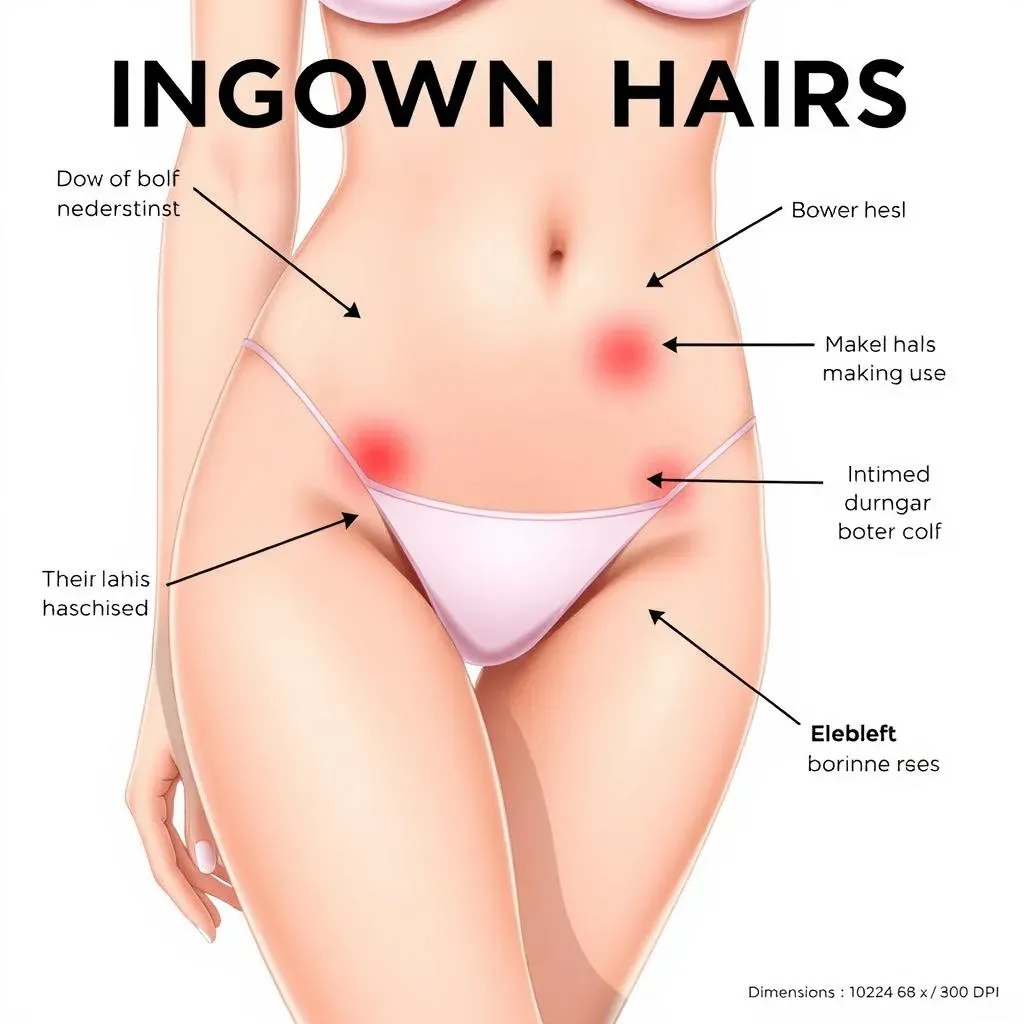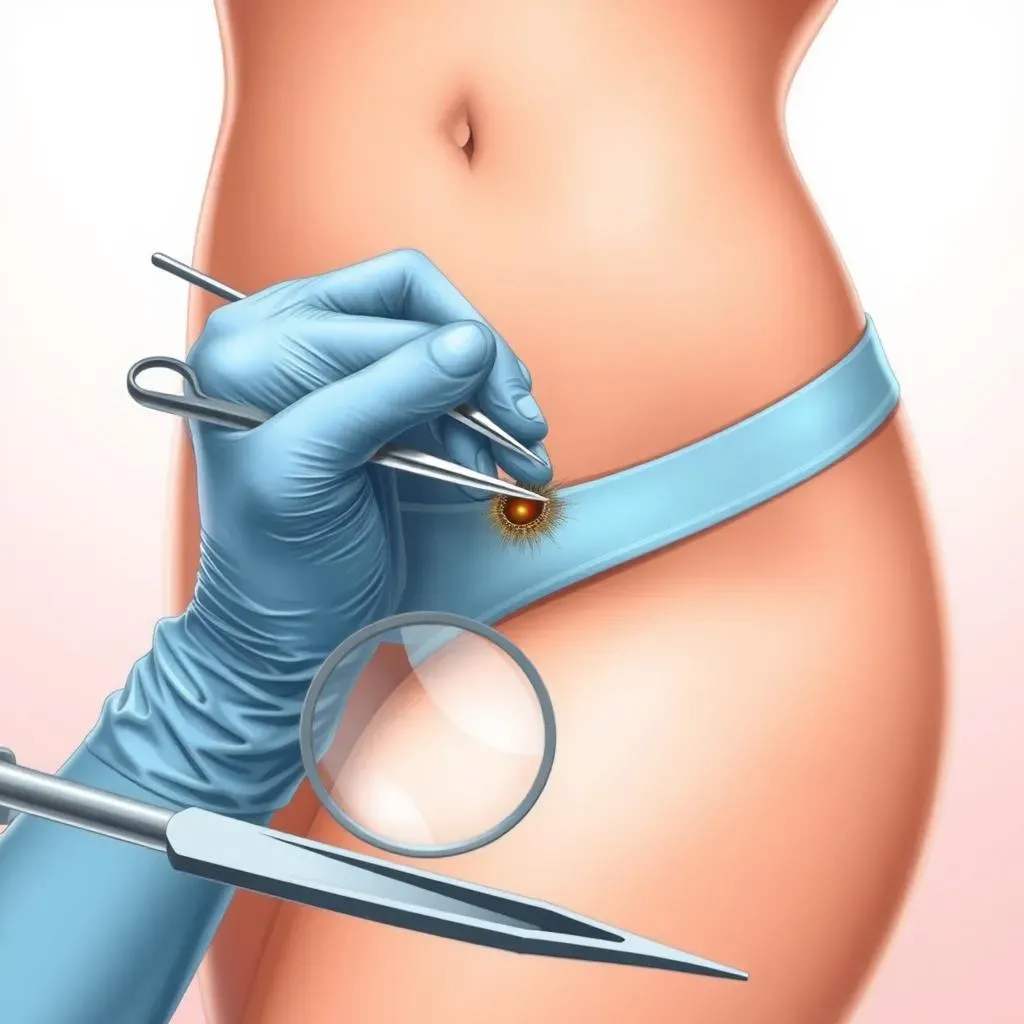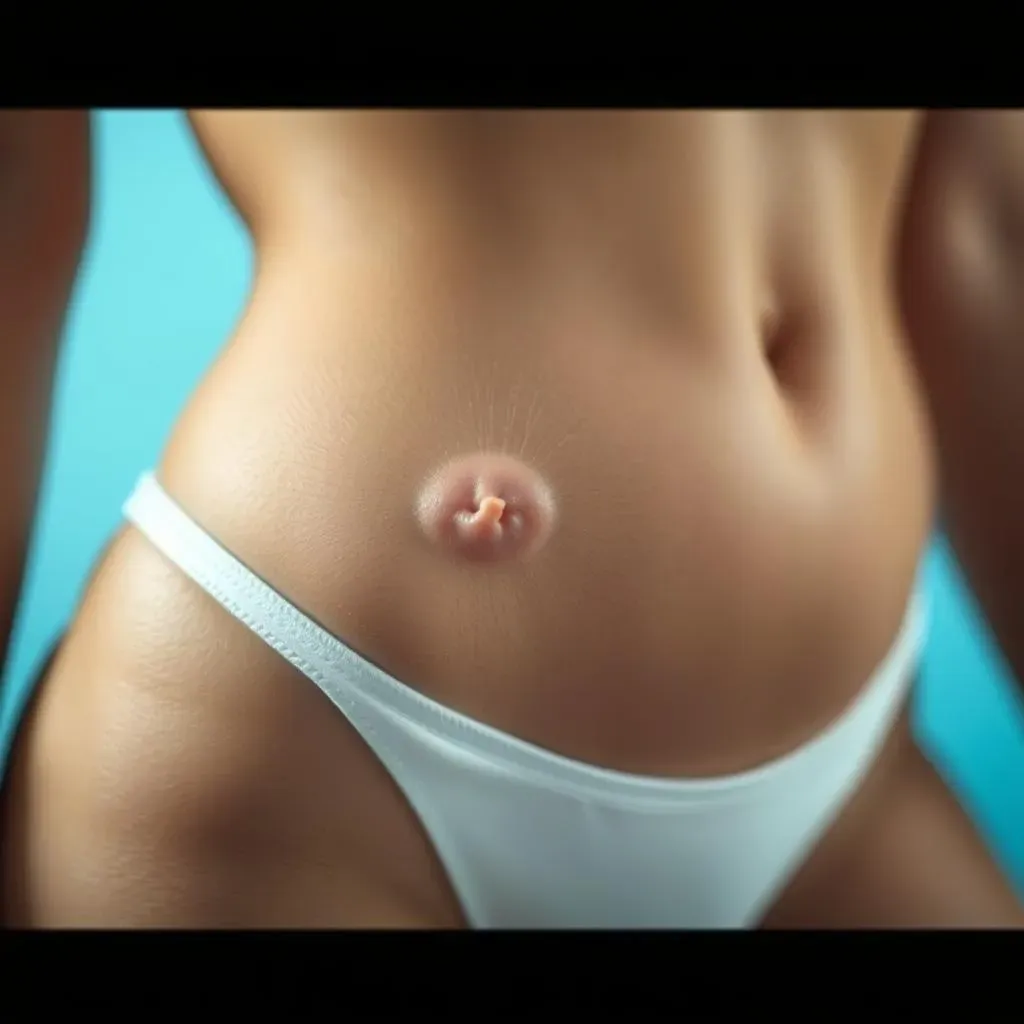Table of Contents
Ingrown hairs in the bikini area can be a frustrating and painful problem, causing redness, swelling, and discomfort. If you're struggling with ingrown hairs, you're not alone. Many people experience this issue, especially after hair removal. But there is hope! With the right techniques and precautions, you can learn how to remove ingrown hair bikini area safely and effectively. In this article, we'll guide you through the process of removing ingrown hairs, from understanding the causes and symptoms to bringing the hair to the surface and removing it. We'll also discuss how to prevent future ingrown hairs and maintain healthy, smooth skin. Whether you're looking for home remedies or professional solutions, we've got you covered. So, let's dive in and explore the best methods to remove ingrown hair bikini area and achieve the confident, comfortable skin you deserve.
Understanding Ingrown Hair in the Bikini Area: Causes and Symptoms

Understanding Ingrown Hair in the Bikini Area: Causes and Symptoms
What are Ingrown Hairs?
Ingrown hairs occur when hair grows back into the skin instead of outward, causing inflammation, redness, and sometimes infection. In the bikini area, ingrown hairs can be particularly problematic due to the sensitive nature of the skin. They can appear as small, painful bumps or pus-filled blisters, making it uncomfortable to wear tight clothing or engage in physical activities.
The main causes of ingrown hairs in the bikini area include:
- Improper shaving techniques, such as shaving too closely or using dull razors
- Tight clothing that rubs against the skin, causing friction and irritation
- Dead skin cells and other debris clogging the hair follicles
- Genetic predisposition to curly or coarse hair, which is more prone to ingrowth
Symptoms and Diagnosis
If you're experiencing ingrown hairs in the bikini area, you may notice symptoms such as:
Symptom | Description |
|---|---|
Redness and inflammation | The affected area may become red, swollen, and warm to the touch |
Pain and discomfort | Ingrown hairs can be tender and painful, especially when touched or rubbed |
Pus or discharge | In severe cases, ingrown hairs can become infected, leading to pus or discharge |
It's essential to recognize these symptoms early on to prevent further complications and promote effective treatment. By understanding the causes and symptoms of ingrown hairs, you can take the first steps towards removing them and preventing future occurrences.
Removing Ingrown Hair Bikini Area: Tips and Precautions

Removing Ingrown Hair Bikini Area: Tips and Precautions
When it comes to removing ingrown hair in the bikini area, it's essential to approach the process with caution to avoid further irritation, infection, or scarring. Before attempting to remove an ingrown hair, make sure you've stopped all hair removal activities to prevent exacerbating the issue. Additionally, avoid picking or scratching the affected area, as this can push the hair deeper into the skin and lead to infection.
To relieve itching and reduce inflammation, consider applying a hydrocortisone cream or another soothing agent. Warm compresses can also help draw the hair to the surface, making it easier to remove. However, if the ingrown hair is deeply embedded or infected, it's crucial to seek medical attention. A dermatologist may prescribe antibiotics or use specialized techniques to remove the hair safely.
Precaution | Why It's Important | Tips |
|---|---|---|
Stop Hair Removal | Prevents further irritation and infection | Avoid shaving, waxing, or tweezing until the ingrown hair heals |
Avoid Picking or Scratching | Prevents pushing the hair deeper and causing infection | Apply soothing creams or cold compresses to reduce itching |
Use Warm Compresses | Draws the hair to the surface | Soak a cloth in warm water, apply it to the area for 10-15 minutes, 2-3 times a day |
By following these precautions and tips, you can minimize the risk of complications and promote healthy skin. Remember, patience is key when dealing with ingrown hairs. Allow the hair to surface on its own, and avoid forced removal, which can lead to further irritation.
- Keep the affected area clean with mild soap and lukewarm water
- Avoid tight clothing that may irritate the skin
- Exfoliate gently to remove dead skin cells and promote hair growth
Remember, if you're unsure about how to proceed or if the ingrown hair persists, consult a dermatologist for professional advice and treatment. They can provide personalized guidance and help you achieve smooth, ingrown-hair-free skin.
Bringing Ingrown Hair to the Surface: Warm Compresses and Exfoliation

Bringing Ingrown Hair to the Surface: Warm Compresses and Exfoliation
Using Warm Compresses to Draw Out Ingrown Hairs
Warm compresses are a simple yet effective way to bring ingrown hairs to the surface. By applying a warm, damp cloth to the affected area, you can increase blood flow and help loosen the hair. To use a warm compress, soak a clean cloth in warm water, wring it out so that it's damp but not soaking wet, and apply it to the ingrown hair for 10-15 minutes. Repeat this process 2-3 times a day to encourage the hair to emerge.
Warm compresses work by increasing blood flow to the area, which helps to reduce inflammation and promote healing. The warmth also softens the skin, making it easier for the hair to grow out. Additionally, the moisture from the compress helps to keep the skin hydrated, reducing the risk of dryness and irritation.
Compress Type | Benefits | Frequency |
|---|---|---|
Warm Water Compress | Increases blood flow, reduces inflammation | 2-3 times a day |
Herbal Compress (e.g., chamomile or tea tree oil) | Soothes skin, reduces infection risk | 1-2 times a day |
- Avoid using hot water, as it can burn the skin
- Don't apply the compress for too long, as it can cause skin irritation
- Pat the area dry after each compress to prevent bacterial growth
Exfoliating to Remove Dead Skin Cells and Promote Hair Growth
Exfoliation is another crucial step in bringing ingrown hairs to the surface. By removing dead skin cells and other debris, you can help the hair grow outward instead of inward. There are several exfoliation methods you can try, including:
- Physical exfoliants like sugar or salt scrubs
- Chemical exfoliants containing alpha-hydroxy acids (AHAs) or beta-hydroxy acids (BHAs)
- Exfoliating gloves or brushes
When exfoliating, be gentle to avoid irritating the skin further. Focus on the affected area, using circular motions to remove dead skin cells. Rinse the area thoroughly with lukewarm water and pat dry. Exfoliate 1-2 times a week, depending on your skin type and needs.
Exfoliant Type | Benefits | Frequency |
|---|---|---|
Sugar Scrub | Gently removes dead skin cells | 1-2 times a week |
Glycolic Acid Peel | Penetrates deeper to unclog pores | 1 time a week |
Remember, exfoliation is not a substitute for medical treatment. If your ingrown hair is severely inflamed or infected, consult a dermatologist for professional advice.
Removing Ingrown Hair Bikini Area Safely: Tweezing and Aftercare

Removing Ingrown Hair Bikini Area Safely: Tweezing and Aftercare
Once the ingrown hair has surfaced, it's essential to remove it safely to prevent further irritation and infection. Tweezing is a common method for removing ingrown hairs, but it requires caution and proper technique. Here are some tips for tweezing ingrown hairs in the bikini area:
- Ensure the tweezers are sterilized with alcohol or boiling water to minimize the risk of infection
- Wait until the ingrown hair is close to the surface of the skin before attempting removal
- Grasp the hair gently but firmly at the base, avoiding pulling on the surrounding skin
- Pull the hair out in the direction of growth to avoid breaking it off and causing further irritation
After removing the ingrown hair, it's crucial to practice good aftercare to promote healing and prevent infection. Apply an antibiotic cream to the affected area and cover it with a bandage if necessary. Keep the area clean with mild soap and lukewarm water, and avoid tight clothing that may irritate the skin.
Aftercare Step | Benefits | Frequency |
|---|---|---|
Apply Antibiotic Cream | Prevents infection and promotes healing | 2-3 times a day |
Keep the Area Clean | Removes bacteria and debris | 2 times a day |
Avoid Tight Clothing | Reduces irritation and friction | Until the area is fully healed |
By following these steps and tips, you can safely remove ingrown hairs in the bikini area and promote healthy, smooth skin. Remember to be patient and gentle when dealing with ingrown hairs, and don't hesitate to seek medical attention if you experience persistent pain, infection, or scarring.
Preventing Future Ingrown Hairs in the Bikini Area: Lifestyle Changes and Professional Help

Preventing Future Ingrown Hairs in the Bikini Area: Lifestyle Changes and Professional Help
Adopting Healthy Hair Removal Habits
To prevent ingrown hairs in the bikini area, it's essential to adopt healthy hair removal habits. This includes:
- Shaving in the direction of hair growth, not against it
- Using sharp razors to avoid pulling or tugging on the hair
- Avoiding shaving over the same spot multiple times
- Exfoliating the skin before shaving to remove dead skin cells
By following these tips, you can reduce the risk of ingrown hairs and achieve smoother skin. Additionally, considering alternative hair removal methods like waxing, sugaring, or depilatory creams can help minimize the occurrence of ingrown hairs.
Hair Removal Method | Benefits | Risks |
|---|---|---|
Shaving | Quick, easy, and inexpensive | Ingrown hairs, razor burn, cuts |
Waxing | Long-lasting results, reduces hair growth | Painful, skin irritation, ingrown hairs |
Depilatory Creams | Easy to use, painless | Chemical irritation, less effective for coarse hair |
Maintaining Good Skin Care and Hygiene
Good skin care and hygiene are crucial in preventing ingrown hairs. This includes:
- Keeping the bikini area clean with mild soap and lukewarm water
- Exfoliating regularly to remove dead skin cells
- Moisturizing the skin to keep it hydrated and supple
By maintaining good skin care and hygiene, you can reduce the risk of ingrown hairs and promote healthy skin. Additionally, wearing loose, breathable clothing can help reduce friction and irritation in the bikini area.
Skin Care Habit | Benefits | Frequency |
|---|---|---|
Cleansing | Removes bacteria and debris | 2 times a day |
Exfoliating | Removes dead skin cells, promotes hair growth | 1-2 times a week |
Moisturizing | Hydrates the skin, reduces irritation | 1-2 times a day |
Seeking Professional Help for Persistent Ingrown Hairs
If you experience persistent or severe ingrown hairs, it's essential to seek professional help from a dermatologist. They can provide personalized advice and treatment, including:
- Prescribing topical creams or antibiotics for infected ingrown hairs
- Performing procedures like laser hair removal or chemical peels
- Offering guidance on hair removal methods and skin care
Don't hesitate to consult a dermatologist if you're struggling with ingrown hairs. They can help you achieve smooth, healthy skin and prevent future occurrences.
Conclusion: Smooth Skin Ahead
Removing ingrown hair in the bikini area requires patience, care, and the right techniques. By understanding the causes of ingrown hairs, using proper removal methods, and maintaining good hygiene and skincare habits, you can say goodbye to those pesky bumps and hello to smooth, healthy skin. Remember, prevention is key, so consider alternative hair removal methods, exfoliate regularly, and wear breathable clothing to reduce the risk of ingrown hairs. If you do experience an ingrown hair, don't hesitate to try the methods outlined in this article, and seek medical attention if the problem persists. With these tips and a little practice, you'll be on your way to a bikini area that's free from ingrown hairs and full of confidence. Visit hairawaybylaser.com for more information on hair removal and skincare.
